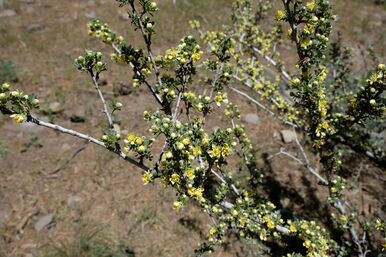|
5/21/2020 1 Comment Antelope Bitterbrush Officially named the “Antelope Bitterbrush”, the Bitterbrush is extremely well adapted to live in desert environments, which is why it is one of the most common species in this area of Nevada. A closer look at the leaves shows that they have a waxy coating, and are covered in tiny hairs which diffuse sunlight - both of which help prevent water loss. The plant also grows roots that have been found to be up to 15ft deep, allowing the plant to access water stored deeper in the soil. Individuals range in size from shrubs to small trees, and most live to be several decades old; though, some of the most successful have been found to be over 100 years old. Bitterbrush provides a crucial habitat for many small animals, namely rodents, snakes, and lizards. The plant has a symbiotic relationship with these creatures: lizards will defend the plant by eating insects that are after its leaves, while the plant’s seeds are a crucial source of food for rodents. Rodents will bury a “cache” to store food for winter, and when some of these caches are inevitably forgotten, the planted seed is left free to germinate and begin the process anew. Take a walk anywhere in the greater Reno area and you will notice that Bitterbrush is also one of the first plants to bloom in the spring. Individuals that have direct exposure to the sun will already have bright yellow, flagrant flowers, while those that are more shaded should bear “bulbs” that will bloom within the next few weeks!
1 Comment
Leave a Reply. |
AuthorThis blog is managed by the staff and volunteers of Galena Creek Visitor Center. We write about parts of the natural world that we find fascinating and want to teach others about, as well as keeping you updated on the Visitor Center and park. If you want to learn more, please sign up for our monthly newsletter, where we share upcoming events, updates on the ecology of the park, and highlights from each month. Archives
October 2021
Categories |
 RSS Feed
RSS Feed
